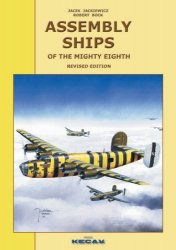The second major battle of the campaign — and possibly the most vital and decisive — was the battle to neutralize the main concentration of Egyptian forces in the Sinai, the defended localities of Kusseima/Abu Ageila and Um-Katef, and to overrun the central axis from Kusseima to Ismailia. This defensive front has been described by the American military commentator General S. L. A. Marshall, in his commentary on the Sinai
Campaign,* as the ‘Abu Ageila hedgehog’. It comprised three successive, strongly-fortified sand ridges overlooking the main crossroads facing east, protected by deep trenches, bunkers, double-apron concertina barbed wire fences, minefields and fortified by field artillery and tank-destroying weapons. This front blocked the main central axis — the axis that, if opened, would ensure the success of the campaign. Gaining control of these positions would also open up an alternative transport and supply route from Israel to Sharon’s 202 Parachute Brigade at the Mitla Pass. The task was entrusted to the 38th Divisional Group, comprising the 4th and 10th Infantry Brigades and the 7th Armoured Brigade, together with an artillery group and a battalion of engineers. It was commanded by Colonel Yehuda Wallach, who had previously commanded the famous ‘Givati’ Brigade of War of Independence fame (and was later to become Professor of Military History at Tel Aviv University.)
On the evening of 29 October, after an exhausting trek through twelve miles of the Israeli Negev, two battalions of the 4th Infantry Brigade (a reserve brigade based primarily on troops from the Tel Aviv area under the command of Colonel Joseph Harpaz) commenced their advance towards the two Egyptian posts close to the Israeli border that served as the main southern forward defence positions for the Egyptian 3rd Infantry Division based on El-Arish, commanded by Brigadier Anwar abd Wahab al Qadi, and the key to the vital central axis. The front, consisting of two fortified hills and the Kusseima outpost, was defended by two battalions of Egyptian border guards, an infantry company and a jeep company, all under the command of the Egyptian 6th Brigade (Brigadier Gaafer el Abd) which controlled the Abu Ageila/Um-Katef‘hedgehog’. After discovering that the first two hill emplacements (the Sabha emplacements) were empty, the 1st Battalion of the 4th Brigade moved towards the Kusseima outpost, some eleven miles distant. The difficult territory had taken its toll, however, and only by early morning did the Battalion actually begin its assault, encountering heavy return fire from the outpost. The assault was completed by both lead battalions of the Brigade and immediately thereafter an armoured task force of the 7th Armoured Brigade arrived, despatched by the GOC Southern Command, Major-General Assaf Simhoni, to ensure the speedy completion of the assault. The original plans had not envisaged the entry of the crack 7th Armoured Brigade until the campaign had entered its second day when the assault on the ‘hedgehog’ was at a further advanced stage, but the addition of armour at this earlier stage was considered necessary in order to press forward with the preliminary phase of the campaign, and ensure the establishment of a firm base as a jumping-off line in Egyptian territory.
A tall, gruff, unkempt farmer, son of a kibbutz, whose mother was a prominent labour leader. General Simhoni, who had come up through the ranks of the Palmach, was a rising star in the Israel Defence Forces. In his moment of success, after reviewing a victory parade of the 9th Brigade at Sharm El-Sheikh on the conclusion of the Sinai Campaign, Simhoni was
General S. L. A. Marshall, Sinai Victory, 1958.
To fly north, accompanied by his liaison officer, in a light aircraft to the village of Kfar Giladi in upper Galilee. The aircraft ran into heavy winds which whipped up a sandstorm across the desert and blinded Simhoni, who was in the pilot’s seat: the aircraft was blown eastwards off its course, and in the blinding storm crashed in the mountains of Jordan, killing its occupants. The bodies were later returned by the Jordanians to Israel.
As originally planned, the 4th Brigade sent out its advance units from Kusseima to Nakhle, to establish contact with Sharon’s brigade, and thereby open up a second land axis to the paratroopers. Meanwhile, encouraged by the progress of operations. General Simhoni decided to alter the original plans and to maintain the momentum created by the 7th Armoured Brigade. Its commander. Colonel Ben Ari had been an outstanding combat officer in the Palmach during the War of Independence. (In the Six Day War, he would command the 10th (‘Harel’) Brigade capturing the area north of Jerusalem; and in the 1973 War he would serve as Chief of Staff to General Gonen, Commander of

The Battle for the Abu Ageila Stronghold, 31 October 1956
The Southern Front. A tall, commanding, soldierly figure, he was later to serve as Consul-General of Israel in New York.)
A task force was now despatched along the road from Kusseima to Abu Ageila to test the southern defences of the ‘hedgehog’. This task force, part of a battalion commanded by Lieutenant-Colonel Avraham (‘Bren’) Adan, came under heavy fire from well emplaced anti-tank weaponry — especially Archer tank destroyers — in the Abu Ageila/Um-Katef emplacements. It soon became evident that any attempt to assault this front directly from the south, with the limited forces and equipment available to this advance task force of the 7th Armoured Brigade, would be doomed to failure and would incur heavy casualties. Leaving a force of armoured infantry to dig in, and after conferring with the Chief of Staff (Moshe Dayan) and the GOC Southern Command, Adan ordered a second armoured task force to continue to advance in a westerly direction, and to find a weak point — a soft spot in the south-western underbelly of the ‘hedgehog’ — well away from the prickly defences of the southern and eastern fronts. By the early afternoon of 30 October, the reconnaissance company of the second armoured task force had discovered a narrow defile, or pass, which would bring the forces behind the Egyptians’ western flank. This passage, the Daika Pass, was very narrow and negotiable by tracked vehicles only. Egyptian sappers had destroyed a bridge over a wadi crossing it, so engineers of the Armoured Brigade had to prepare the ground for passage. By late evening, the reconnaissance unit had crossed the defile and found itself on the main road, leading from the Suez Canal to Abu Ageila, west of the ‘hedgehog’, having in fact cut off the Egyptian supply route to the locality from the Suez Canal area.
While a third task force was sent in a south-westerly direction to cut off a suspected advance by Egyptian armour from the direction of Bir El-Hassne, the remaining forces of the second armoured task force passed through the Daika defile, with orders to overcome the Abu Ageila defences and advance to the Ruefa Dam emplacement,* covering Abu Ageila and Um-Katef. Such a task was risky — very risky — in view of the fact that only tracked vehicles could negotiate the narrow sandy defile, leaving behind the wheeled vehicles with supplies, engineering equipment, ammunition and petrol. Such a tenuous, delicate supply line for such a vital stage of the assault on this front was a gamble: air-dropped supplies were out of the question, since Sharon’s paratroop requirements in the Mitla monopolized the airborne lift capacity of the air force. The only way to solve Adan’s supply problem was to open a direct axis from the east. That evening, the 10th Infantry Brigade was ordered to cross the border and attack the eastern outer ring of the ‘hedgehog’ defences, which consisted of two outposts, Auja Masri and Tarat Um-Basis. These collapsed without any fighting, leaving the 10th Brigade to make its way towards the main defences of the Um-Katef side of the ‘hedgehog’.
By 05.00 hours on 31 October, at the break of dawn, the second armoured task force completed its western approach to Abu Ageila.
* The Ruefa Dam had been built by the British to collect the winter flood-waters in Wadi El-Arish for use by the Bedouin.
Because it served as the Egyptian Area Command HQ, Abu Ageila was a vast and intricate system of camps and bunkers surrounded by barbed wire, minefields and pre-ranged artillery ‘killing grounds’ extending to a distance of seven miles on each side. The reinforced brigade defending the locality comprised two infantry battalions of the Egyptian 6th Brigade, two reserve battalions, a National Guard brigade, a field artillery battalion with twenty-four 25-pounders, anti-aircraft guns, a jeep company and twenty-three Archer tank destroyers. The element of surprise had by now disappeared, for the Egyptians were aware of what was afoot and had the time and opportunity to prepare for the assault. When the half-tracks of the second armoured task force reached within two miles of Abu Ageila, the Egyptian defences opened up with a concentrated artillery barrage, supported by additional fire from the Ruefa Dam, which covered the Israeli attack on its right flank. Armoured infantry continued to advance in half-tracks while the tanks covered both the Ruefa Dam barrage and an Egyptian armoured advance, coming up from the north, on the El-Arish-Abu Ageila road. Within an hour, Abu Ageila fell. The advancing Israeli forces were now harassed by a constant barrage of heavy artillery from Um-Shihan, another fortified post within the ‘hedgehog’. This was co-ordinated with repeated attempts by Egyptian armour to break through from the north — attempts that were foiled by Israeli joint armour-air force action.
The first task force, which had been ordered to dig-in south of the ‘hedgehog’, should now have come in to reinforce Adan in the neutralization of the dangerous Ruefa Dam emplacement. However, reports arrived of an armoured column of the Egyptian 1st Armoured Brigade led by Colonel Talat Hassan Ali advancing along the central axis from Bir Gafgafa towards the ‘hedgehog’. This force, according to the reports, consisted of two battalions of Soviet-built T-34 tanks, a company of Soviet-built, heavy SU-100 tank destroyers and a battalion of motorized infantry on troop carriers. The first task force was immediately despatched to block the approach of this force. It discovered the column with difficulty, however, for Israeli aircraft had already attacked it and caused havoc, forcing it to turn around and return to Bir Gafgafa and, from there, to cross the Canal, leaving rearguard ambushes at Bir El-Hama, and Bir Gafgafa. Ben Ari, leading the task force, chased the column until its retreat over the Canal and, after clearing the central axis, halted the chase ten miles from the waterway opposite Ismailia.
With the threat of Egyptian armour attacks having been taken care of, and the central axis blocked to any Egyptian armoured advance, the second task force of the 7th Armoured Brigade was left to continue the assault on the ‘hedgehog’. On the evening of 31 October, the order came to take the Ruefa Dam. This position consisted of more than twenty well-entrenched tank guns, ten of which were Archers, six 25-pounders, seven 57mm guns and two 33mm cannon. The second task force opened a frontal attack from the direction of Abu Ageila to the Ruefa Dam'at sunset. The tanks moved forward in a cloud of dust in the failing light, and came up against concentrated anti-tank firepower that proved to be
Very effective and, in fact, succeeded in hitting every Israeli tank in the task force. Urged on by its commander, the force nevertheless persevered in the attack and, as darkness fell, the battle continued, illuminated by burning ammunition stores and vehicles. As the Israeli tanks and half-tracks broke into the Egyptian positions, many of the tanks were without tank cannon or heavy machine-gun ammunition, but the Israelis continued their advance, crushing the Egyptian positions with the tank tracks, lobbing grenades at the defending Egyptians and firing at them with personal weapons from open turrets. Before this determined attack, the Egyptian defences collapsed.
The exhausted and decimated Israeli crews set about repairing and resupplying their tanks, only just in time to meet a counterattack from Um-Katef supported by fire from Um-Shihan. This Egyptian attack failed, leaving in its wake four Archers burning and 37 men dead on the battlefield. By the morning of 1 November, with most of the tanks repaired, the second task force was ordered to block any attempt by the Egyptians to move out of the remainder of the ‘hedgehog’ under Egyptian control — Um-Katef and Um-Shihan, along the northern road, to El-Arish.
The task of capturing the remaining Um-Katef/Um-Shihan pocket was entrusted to the 10th Infantry Brigade, which two days earlier had taken the eastern outer defensive front of the ‘hedgehog’ (Auja/Masri and Tarat/Um-Basis) without resistance. The aim was to complete the destruction of the ‘hedgehog’ and to open up a direct axis to facilitate the transport of supplies to the 7th Armoured Brigade — which Dayan was becoming very impatient about. Unfortunately, the 10th Brigade, a reserve unit, was neither trained nor equipped to deal with a stronghold position in the desert, even though it was now reinforced by part of the 37th Armoured Brigade from GHQ Reserve. When the reconnaissance unit of the 10th Brigade reinforced by an infantry company and ten halftracks launched its assault on Um-Katef on the morning of 1 November, the Egyptian defenders replied with a heavy artillery barrage that drove it back. A second attempt by night failed after two battalions lost their way searching for the northern and southern flanks of the Um-Katef position. By morning, one of the battalions, which had finally reached Um-Katef, was once again pushed back by heavy artillery fire, while the other only succeeded in capturing a remote emplacement, some one-and-a-half miles from the main defensive area. A combination of faulty intelligence at Southern Command, lack of an effective battle plan and the insufficient concentration of resources contributed to the failure of the 10th Brigade (and later of the 37th Brigade) to break through. Dayan had put pressure on GOC Southern Command, and this pressure had been passed on, but the attacks had failed. The commander of the 10th Brigade was replaced, as Dayan felt that the unit had not made the necessary effort to enter into combat. The 37th Armoured Brigade arrived late on the scene with its full complement of tanks, but it too failed to push its way through. A gallant but ill-conceived frontal attack by half-tracks led by the Brigade commander. Colonel Shmuel Galinka, only caused extensive casualties.
Including his own death. The Egyptians, however, were by now fearful of being cut off. During the night they slipped away and, by the morning of 2 November, after routes had been cleared through the minefields, a task force of the 10th Brigade found the place empty.
By completing the assault on the Abu Ageila/Um-Katef system of defences, the Israelis had captured the core of the Egyptian defensive front in the Sinai, opened up a good-quality supply route to the forces at the Mitla Pass and along the central axis, and had cut off the Egyptian garrison in the Gaza Strip. There remained the task of clearing up the Egyptian forces in the north-west, in the Rafah area and the Gaza Strip, and then of opening the Straits of Tiran, at the southern tip of Sinai — all this within a strictly-limited political timetable imposed by the United Nations, United States and Soviet pressure, and by the planned Anglo-French military action against the Canal Zone.




 World History
World History









